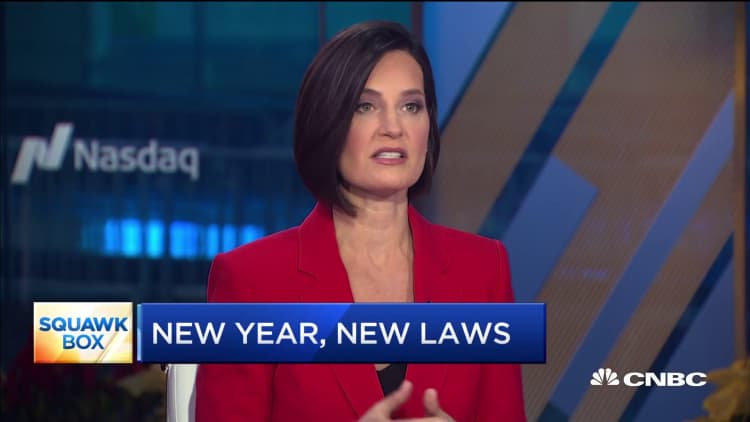After more than three years of debate, negotiation and lawsuits, the U.S. Department of Labor's new mandatory overtime pay rules go into effect Jan. 1. The rule extends overtime pay to an estimated 1.3 million U.S. workers.
Under previous rules, workers who earn a salary instead of an hourly wage are entitled to overtime pay if they earn less than $23,660 a year. The new rule raises the threshold to $35,568, below the threshold of $47,000 first introduced in 2016 under the Obama administration. Workers who are not exempt must receive at least one and a half times their regular pay after working 40 hours a week. Salaried employees who make less than a certain amount and have executive, administrative or professional duties are also exempt.
Companies will need to pay more in wages to comply, but the overall benefit to workers will be mixed.
"In a compromise, no one is truly happy. It's leaving behind workers who could get better overtime protections under the 2016 rule proposal," said Margaret Ferrero, vice president and assistant general counsel at ADP. "The big thing is really for employers to get the analysis done sooner rather than later."
Lior Rachmany, chief executive of Brooklyn-based Dumbo Moving & Storage, said he prepared for the changes back in 2016 by promoting some staff to managerial positions who would not be eligible for overtime. He also grew his workforce from 60% to 70%. Movers who previously worked two to three jobs a day now complete one or two.

"We tried to increase the workforce to have less possibility for overtime. ... We also hired a lot of outside agents and vendors," Rachmany said. "Sometimes outside vendors and affiliates help relieve us from overtime rules."
There's also a downside for companies.
"We lose the craftsmanship. ... If someone is that good and you have someone who can perform above average, you want to give them more challenges. But if they fall on the salary bracket at less than $35,568, they will need to take a step back and get less jobs. Unfortunately, we have to give the workload to a new workforce. ... We are losing out, and the employee is also losing out," said Rachmany.
Companies are relieved that the threshold is lower than originally proposed. The threshold of $23,660 a year has been unchanged since 2004, when it was set by the Bush administration. The new rule "brings a commonsense approach that offers consistency and certainty for employers as well as clarity and prosperity for American workers," Patrick Pizzella, acting U.S. Secretary of Labor said in a statement in September.
But workers are still losing out on wages. Back in 1975 the threshold was $8,060, which is equivalent to about $50,440 in 2014. The original rule issued in 2016 was trying to bring salaries in line with inflation and the increased cost of living. Then just before the rule was set to go into effect, a district court judge in Texas blocked the rule nationwide. Companies argued that the new limit was too high.
Little time to prepare
The decision, which was announced in late September, gave companies little time to prepare.
"It's a busy time of year to begin with and wasn't a huge amount of time that employers provided to actually take all these actions," said Lee Schreter, co-chair of the wage and hour practice group at Littler, a law firm focused on labor and employment law.
We tried to increase the workforce to have less possibility for overtime. ... We also hired a lot of outside agents and vendors [to] help relieve us from overtime rules.Lior RachmanyCEO of Brooklyn-based Dumbo Moving & Storage
"Not only is the federal government increasing overtime levels, but many states are raising their salary levels, so you have to think about your labor costs and what makes the most sense for your business," said Schreter. Several states, including New York and California, have salary thresholds that are higher than the federal standard for determining overtime eligibility.
Companies must analyze their workforce not only by salary but also job description. There are actually two parts to the executive, administrative and professional exemption tests. The first is that employees must be paid on a salaried basis that meets the minimum threshold. The second, often overlooked part of the test requires that employees also perform certain duties.
"It's a common misconception that just because someone is paid on a salaried basis, they are exempt," said Krista Slosburg, an employment attorney at Stokes Lawrence in Seattle.
"It's that aspect of the test that requires a bit more analysis. I've been counseling employers that it's a good time to revisit job descriptions and conduct internal audits to verify that employees have been properly classified," Slosburg explained.
For more on tech, transformation and the future of work, join CNBC at the @ Work Summit in New York on April 1–2, 2020.






